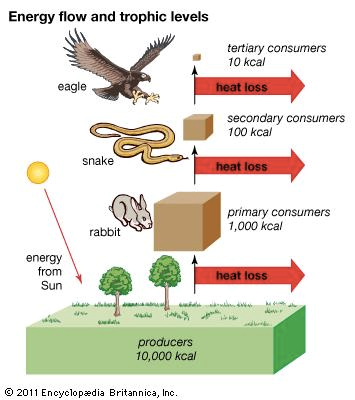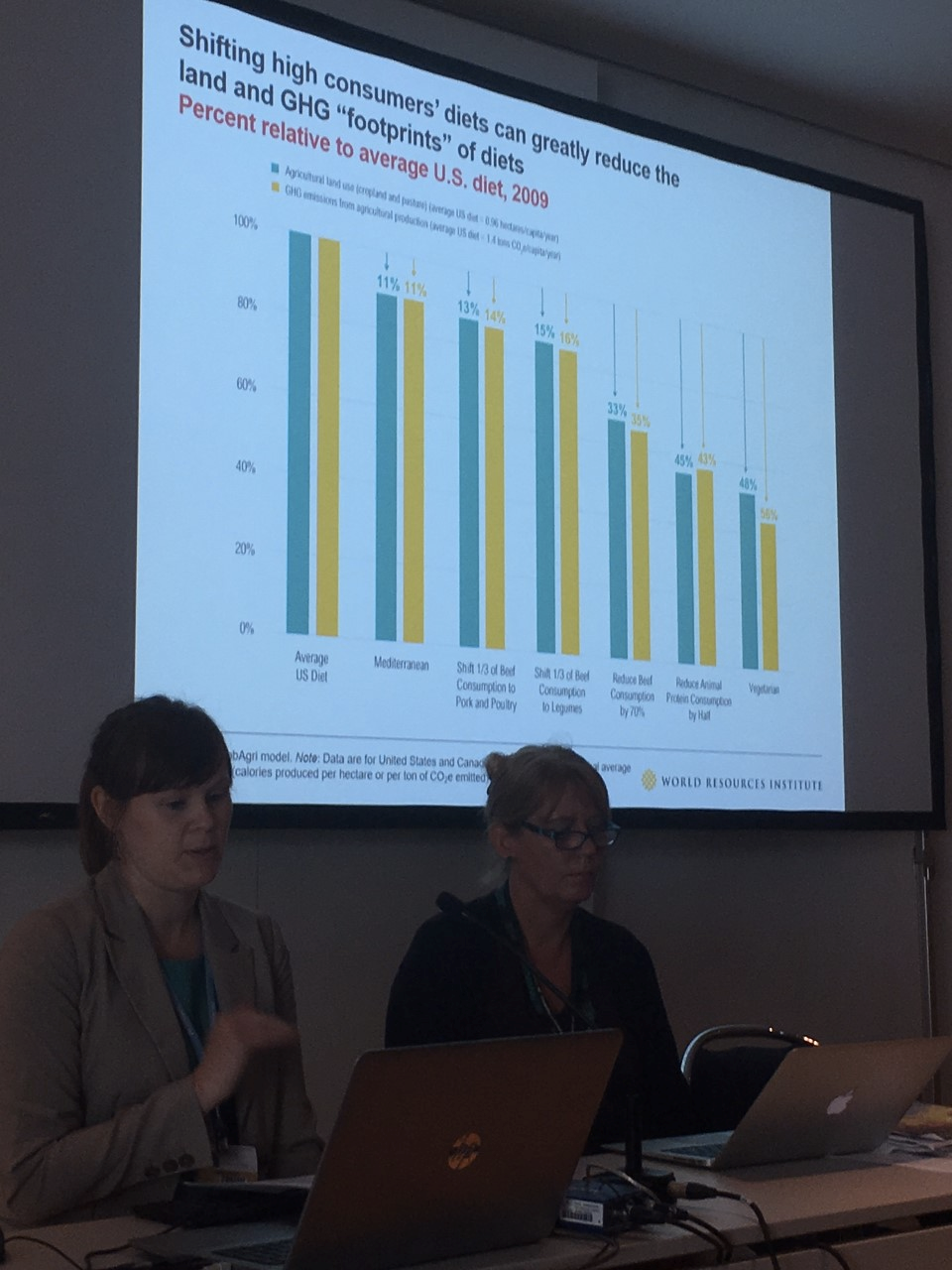
Now on to the session. Let me first say this session was highly interactive and extremely productive. Different speakers talked about the different aspects of the connection between forest ecosystems, climate change and diets. The session started off with explaining that a sustainable diet inherently implies a drastic shift in dietary choices for many societies. A current trend that is counteracting this, is the fact that people are increasingly
A) consuming an excess amount of protein; and
B) that more and more of this protein originates from animal sources (this ‘gap’ between animal- and plant based protein consumption is expected to increase another 80% by 2050 based on current trends).Looking back at the trophic pyramid image, this trajectory leads to an exponential loss of energy efficiency.
Alright, so how do forests factor in to the bigger picture? The livestock industry largely uses soy to feed the animals. Once again, I would like to stress that if this soy were to be fed directly to people, energy efficiency would be immensely higher (i.e. 90% of the energy per unit food that would otherwise be lost is maintained). This would thus mean a significant difference in global landuse. In order to grow soy meant to feed the cows, deforestation is – unfortunately – the answer in most cases.
When it comes to current tropical deforestation, we can attribute over 90% to the production of livestock. The meeting mentioned that the WTO is involved in global trade agreements of soy, and that they have clear and transparent reports available about the circulation of soy.
 Another interesting imagery provided by the speakers of the WRI (world resource institute) was the Cattle Nation idea: if you put all the cows meant for livestock production together in one country, it would be the third largest CO2 emitter in the world. Yes, the cows would follow the USA and China. And it would follow them closely.
Now, we do realize that pushing for vegan or vegetarian agenda may not be an appropriate request for countries who are facing other challenges. However, a drastic change in the proportion of animal protein in the average diet needs to be realized one way or the other in order to foster durability and longevity of our collective food intake. Cutting down more forest can’t be the solution to feeding more and more mouths.The idea of shifting diets has to do with the SDGs (in particular 2 and 12) and the Paris Agreement. Shifting diets could be a positive way to fulfill both agendas.
Progress in terms of stimulating this shift has been realized both via bottom-up (education on i.e. health risks associated with eating meat) and top-down (meat taxes) pathways and seems to continue the trend of choosing a plant-based diet (or at least, partially) in the Western world. The challenge remains, however, to simulate a diet shift in developing nations. After all, one should have alternatives in food sources in order to be able to choose in the first place. This underlines the importance of SDG 2: eliminating hunger.]]>
Another interesting imagery provided by the speakers of the WRI (world resource institute) was the Cattle Nation idea: if you put all the cows meant for livestock production together in one country, it would be the third largest CO2 emitter in the world. Yes, the cows would follow the USA and China. And it would follow them closely.
Now, we do realize that pushing for vegan or vegetarian agenda may not be an appropriate request for countries who are facing other challenges. However, a drastic change in the proportion of animal protein in the average diet needs to be realized one way or the other in order to foster durability and longevity of our collective food intake. Cutting down more forest can’t be the solution to feeding more and more mouths.The idea of shifting diets has to do with the SDGs (in particular 2 and 12) and the Paris Agreement. Shifting diets could be a positive way to fulfill both agendas.
Progress in terms of stimulating this shift has been realized both via bottom-up (education on i.e. health risks associated with eating meat) and top-down (meat taxes) pathways and seems to continue the trend of choosing a plant-based diet (or at least, partially) in the Western world. The challenge remains, however, to simulate a diet shift in developing nations. After all, one should have alternatives in food sources in order to be able to choose in the first place. This underlines the importance of SDG 2: eliminating hunger.]]>